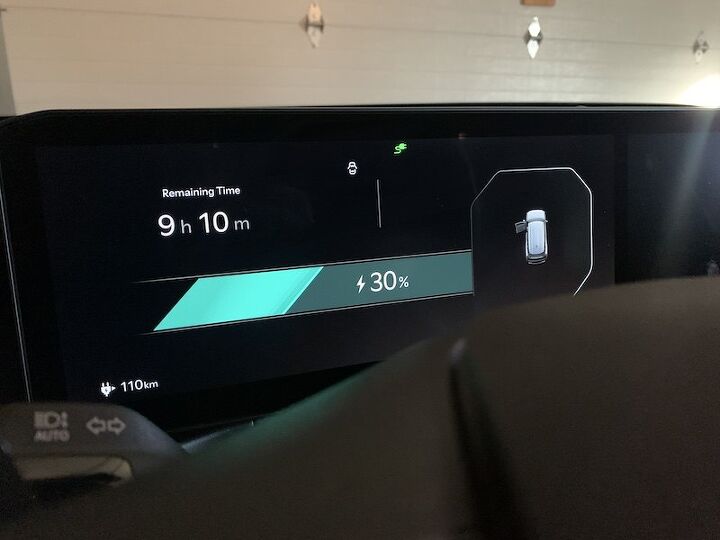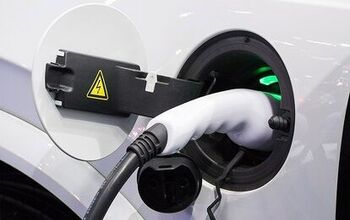Amped Up: Installing an EV Charger at Home

There’s no shortage of debate in this country about electric vehicles – and for good reason. For some, the technology just isn’t quite there yet to fulfil the daily duties they require of their primary vehicle. For others, existing levels of range being offered in the marketplace suits their needs just fine. Other considerations like affordability and performance are as much case-by-case as an individual’s dinner order at a restaurant.
One thing almost everyone can agree on? The appalling state of public charging infrastructure. Faced with broken chargers or a simple lack thereof, your decided to make the leap and install a Level 2 charger in the garage space attached to his home.
It’s a service to you, too, dear reader. Third party studies and anecdotes alike suggest many EV owners carry out up to 80 percent of charging at home, not at the perpetually frustrating public units. With a Level 2 charger at hand, we can better replicate the typical experience of a real-world EV owner and bring you more comprehensive report of whatever electric vehicle is darkening our driveway in a particular week instead of turning the review into a vehicle for kvetching about the state of communal charging stations.
Before diving into the details, we’ll remind anyone who fell asleep in class that the chargers which a provided as standard with most EVs and PHEVs are called Level 1 units and plug into a normal 110V household outlet as if one were plugging in their Samsung television or knackered old Xbox. Level 2 chargers connect to a 220V outlet, like the ones used to power an electric range or clothes dryer. Technically, it’s called a NEMA 14-50 outlet.
This option from a company called Autel was selected based on a $399 price, connectivity features, and – to be blunt – a promise of fast shipping. Called the MaxiCharger AC Lite, it is equipped with the standard J1772 plug which is part and parcel of most EVs today but will soon be making way for the NACS (Tesla) charging plug. I’m not concerned about that development because convenient adapters for making the conversion are small and inexpensive.
Make sure to get a unit which has power cords sufficient for yer needs. This Autel has a 25-foot charging cable while the one that plugs into the wall is nearly 3 feet long. This will help position the charger in a convenient spot – whether that convenience is centred around usage or installation is up to you and your electrician. Speaking of, I paid a certified professional less than $300 to wire up the required outlet and 40A circuit breaker; it probably would have been cheaper if we weren’t fans of rival hockey teams.
Usage was simple as the day is long. After installing a mounting bracket on wall studs and hanging the charger, all that was required for set up was to simply plug the thing into our new 220A outlet. A couple of blinking lights confirmed the charger was working properly, and a couple more indicated power was flowing once connected to the charging port of a Kia EV9. Dashboard readouts on the blue Kia suggested it was hoovering up electrons to the tune of roughly 7.0kW, a figure which jived with information provided through the Autel app.
And, no, Luddites – you don’t have to install the app on a smart device in order to make the charger work. However, this writer enjoys the ability to start and stop charging remotely, to say nothing of the detailed reports of charging sessions he can export to a nerdy Excel spreadsheet. For example, my charging session of February 11th shows the EV9 consumed 84kWh over 12 hours (about 8pm to 8am), working out to approximately $9.25 USD of electricity at the kWh cost offered where I reside and today’s exchange rate.
Regular unleaded costs about $5.00 per US gallon in my neck of the woods (also at today’s exchange rate) and adding 84kWh to an EV9 is estimated to add about 200 miles of range. This means I’d have to rock a vehicle getting better than 100 mpg in order to best this performance, at least in terms of dollars and cents. Of course, it doesn’t take 12 hours to fill up at a gas station but consider the following notion: if this writer had the option of installing a gas pump from which to refuel his Challenger whilst he slept every night and then get 100 mpg, he’d be furiously happy. I expect the Autel to pay for itself in jig time.
EVs aren’t right for every driver in every application; that’s an established notion and an argument for a different time. But for those who have the space and whom an EV or PHEV makes sense – financially and practically – installing a Level 2 charger like the one we selected is an absolute no-brainer.
[Images: Author]
Become a TTAC insider. Get the latest news, features, TTAC takes, and everything else that gets to the truth about cars first by subscribing to our newsletter.

Matthew buys, sells, fixes, & races cars. As a human index of auto & auction knowledge, he is fond of making money and offering loud opinions.
More by Matthew Guy
Latest Car Reviews
Read moreLatest Product Reviews
Read moreRecent Comments
- Theflyersfan I used to love the 7-series. One of those aspirational luxury cars. And then I parked right next to one of the new ones just over the weekend. And that love went away. Honestly, if this is what the Chinese market thinks is luxury, let them have it. Because, and I'll be reserved here, this is one butt-ugly, mutha f'n, unholy trainwreck of a design. There has to be an excellent car under all of the grotesque and overdone bodywork. What were they thinking? Luxury is a feeling. It's the soft leather seats. It's the solid door thunk. It's groundbreaking engineering (that hopefully holds up.) It's a presence that oozes "I have arrived," not screaming "LOOK AT ME EVERYONE!!!" The latter is the yahoo who just won $1,000,000 off of a scratch-off and blows it on extra chrome and a dozen light bars on a new F150. It isn't six feet of screens, a dozen suspension settings that don't feel right, and no steering feel. It also isn't a design that is going to be so dated looking in five years that no one is going to want to touch it. Didn't BMW learn anything from the Bangle-butt backlash of 2002?
- Theflyersfan Honda, Toyota, Nissan, Hyundai, and Kia still don't seem to have a problem moving sedans off of the lot. I also see more than a few new 3-series, C-classes and A4s as well showing the Germans can sell the expensive ones. Sales might be down compared to 10-15 years ago, but hundreds of thousands of sales in the US alone isn't anything to sneeze at. What we've had is the thinning of the herd. The crap sedans have exited stage left. And GM has let the Malibu sit and rot on the vine for so long that this was bound to happen. And it bears repeating - auto trends go in cycles. Many times the cars purchased by the next generation aren't the ones their parents and grandparents bought. Who's to say that in 10 years, CUVs are going to be seen at that generation's minivans and no one wants to touch them? The Japanese and Koreans will welcome those buyers back to their full lineups while GM, Ford, and whatever remains of what was Chrysler/Dodge will be back in front of Congress pleading poverty.
- Corey Lewis It's not competitive against others in the class, as my review discussed. https://www.thetruthaboutcars.com/cars/chevrolet/rental-review-the-2023-chevrolet-malibu-last-domestic-midsize-standing-44502760
- Turbo Is Black Magic My wife had one of these back in 06, did a ton of work to it… supercharger, full exhaust, full suspension.. it was a blast to drive even though it was still hilariously slow. Great for drive in nights, open the hatch fold the seats flat and just relax.Also this thing is a great example of how far we have come in crash safety even since just 2005… go look at these old crash tests now and I cringe at what a modern electric tank would do to this thing.
- MaintenanceCosts Whenever the topic of the xB comes up…Me: "The style is fun. The combination of the box shape and the aggressive detailing is very JDM."Wife: "Those are ghetto."Me: "They're smaller than a Corolla outside and have the space of a RAV4 inside."Wife: "Those are ghetto."Me: "They're kind of fun to drive with a stick."Wife: "Those are ghetto."It's one of a few cars (including its fellow box, the Ford Flex) on which we will just never see eye to eye.






































Comments
Join the conversation
Do I have this right…$0.11 per kWH? Where I live (Massachusetts) we pay $0.44/kWH, and it’s been as high as $0.64 in the past 24 months due to seasonal adjustments. If you get the equivalent of 100 mpg at $5.00/gallon, I’d get 25 mpg equivalent because my electricity is 4x more expensive.
Except I get 30 mpg (actual daily driving mileage over 2 weeks.) And regular is $3.50 so the gap is even bigger.
Maybe if I were commuting 20 miles into Boston every day, stuck in stop-and-go traffic for 90 minutes, an EV would make sense. 40 miles round trip to and from the garage charger, and EV mileage probably isn’t much affected by stop-and-go.
Thank you, though, for sharing your experience. Sharing real numbers is illuminating.
I bought this EVSE - it charges fine, but none of the Smart features work through the APP. No notifications, no charging history, no remote start / stop control, WiFi works, but only when in Bluetooth range. I installed in late Feb and Autel has said this is a software issue - still not resolved - they won't replace the unit or refund, so for now I just have to wait for an update. Just curious to see if your App and Smart Features are still working and whether your opinion has changed.
What's extra annoying is Amazon is censoring reviews on this product and won't allow negative posts. Within the Autel app there is a bug comment section and hundreds of people are complaining about similar issues.
Based on my experience I would not recommend Autel EVSEs - they are not Smart chargers, just vaporware - fake it till you make it!